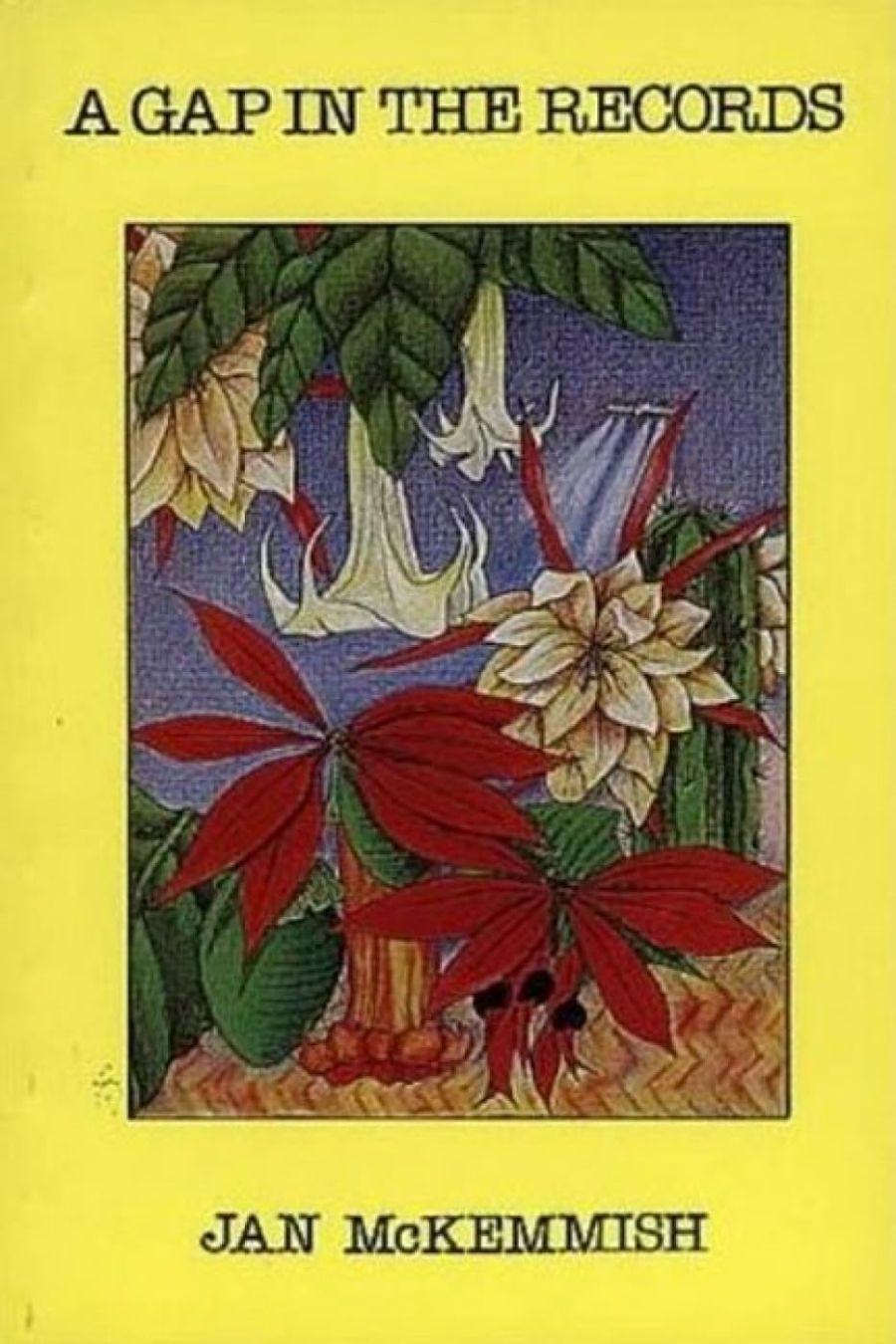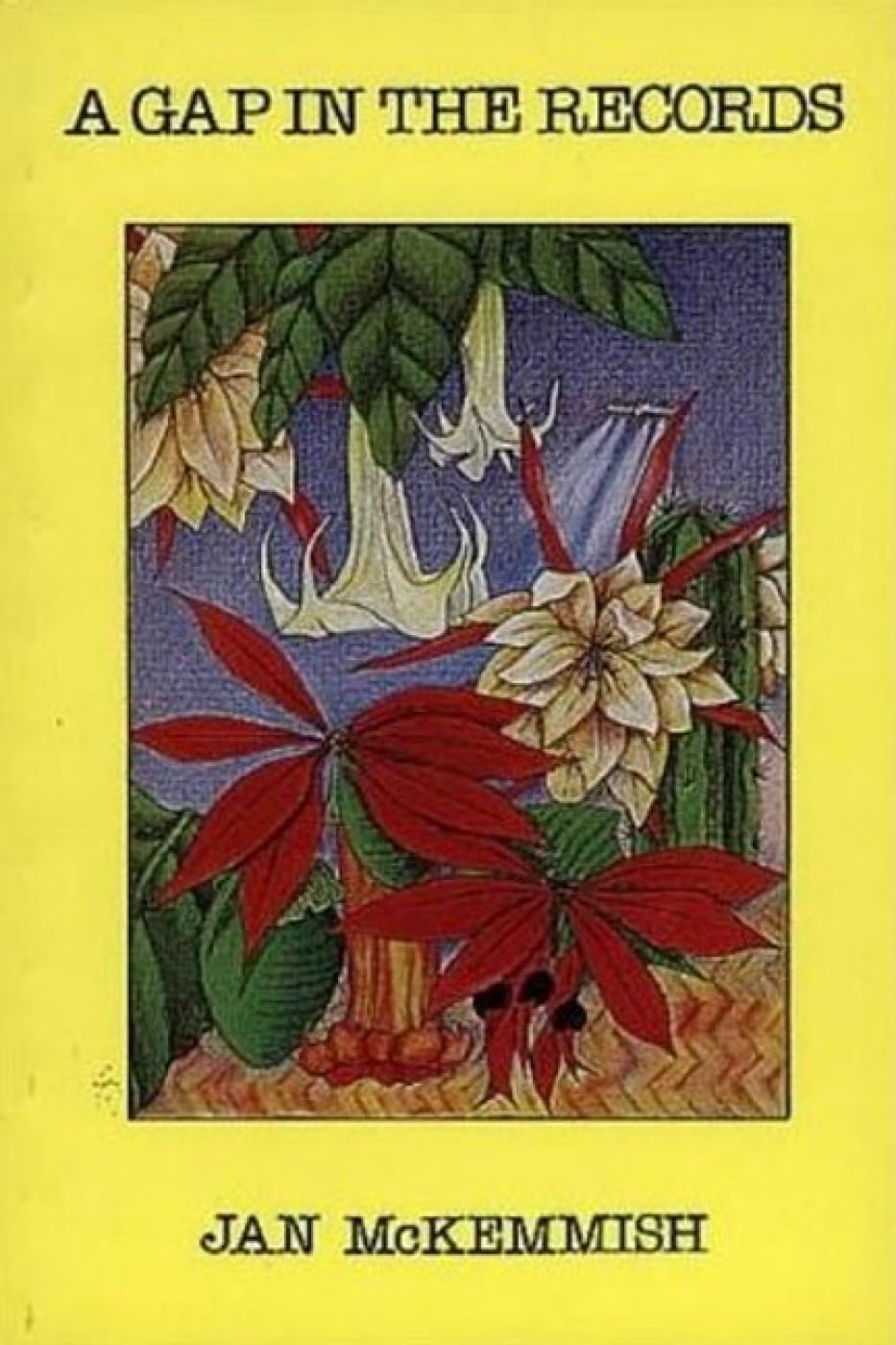
- Free Article: No
- Contents Category: Fiction
- Review Article: Yes
- Article Title: Jade and bullets
- Online Only: No
- Custom Highlight Text:
Inside Jan McKemmish there is a good short story writer trying to get out. A Gap in the Records is a novel about an international female intelligence apparatus. At its heart is the story of an assassination of a crook, Crane, by an agent of the apparatus, Mary Stevens.
McKemmish wastes no space – not a line, not an adverb – in getting Mary Stevens to Hong Kong and into the confidence of Crane. She is at the races, at the ballet, swimming in his pool, dancing at his club. Her life is ascetic (minimum alcohol, yoga, no sex) and dedicated.
In a marvellous spider’s-web conversation she lures Crane to accompany her on a shopping expedition. So she tricks the criminal into Graeme Wong’s hidden shop at the back of Mud Lane. A gun is waiting for her there in one of the jade cases. Her accomplice is there too, playing the part of shop assistant!
- Book 1 Title: A Gap in the Records
- Book 1 Biblio: Sybylla Press, 114pp., $9.95pb
- Book 1 Cover Small (400 x 600):

- Book 1 Cover (800 x 1200):

In a marvellous spider’s-web conversation she lures Crane to accompany her on a shopping expedition. So she tricks the criminal into Graeme Wong’s hidden shop at the back of Mud Lane. A gun is waiting for her there in one of the jade cases. Her accomplice is there too, playing the part of shop assistant!
Dagmar was dressed in dull brown but smart as usual. Her hair was dyed black and pulled severely back. She wore glasses but no other jewellery. She sat at a desk writing in a ledger. Her face showed no interest in their entrance. She stood and greeted them in French, a diverting touch, and walked away from the desk with its clutter of boxes and books. One box was set aside. She touched it as she went. This was Mary’s sign.
You cannot help noticing how deftly this is done. Every bit of information in that paragraph contributes to its mood. Yet there is no clutter in this self-contained unit: McKemmish has cut everything unnecessary from her prose. The pace is slow but relentless;
She set a large case on the display table and opened the one on her desk as she spoke. Mary caught her meaning and waited, looking at the pieces, fingering, holding them against her face, exclaiming at their coolness. She stood by the desk and examined the smaller case, a gun and some superb pieces. She removed the gun and carried the case to the centre table, hand and gun hidden beneath. She stepped up to Crane and levelled the open box at his stomach as if to show him, she raised it higher, aiming upwards, she pulled the trigger three times. Crane stared at her a second as the muffed pops crowded into his flesh. Mary stood very still staring at him. He died quietly, quickly, as if he’d been taught to die that way. Then she turned and followed Dagmar through the door behind the screen.
The rest of the story about Mary’s escape, collapse and recovery is dealt with as cleanly as this episode. I think Jan McKemmish is already a remarkable writer. Her strength is that she knows what to cut out. She writes the way we’d all like to do, if only we had time.
But what works in a story may fail in a novel. This is particularly true when, as here, the novel is about the randomness of life. If a novel gets too haphazard a bewildered reader is tempted to stop reading or skip a few pages. The structure of A Gap in the Records is at times too fragile to maintain one’s interest.
To connect with a reader the characters of a novel, unlike those of a short story, have to have some meat on them. Jan McKemmish’s characters are sometimes so lean that they seem to disappear. They would probably be happier working out their destinies in short stories.
The design of the book is a delight. I first saw it at the bookshop at Canberra’s National Word Festival and bought it as soon as I saw it because of Sava Pinney’s beautiful cover. Inside there are ‘postcards’ by Sava Pinney which at first seem a bit tricksy but then come to be seen as integral to the joy of the book as a whole.


Comments powered by CComment